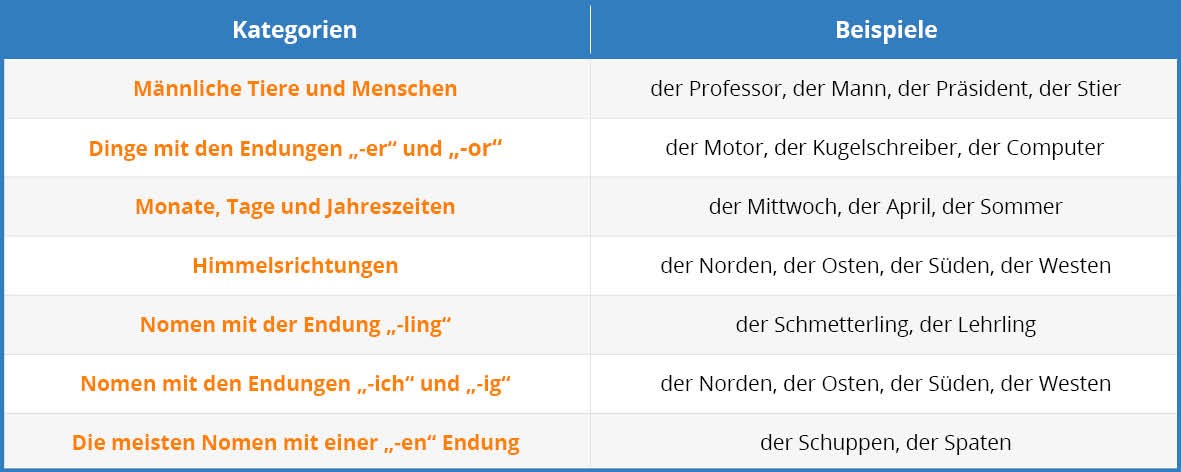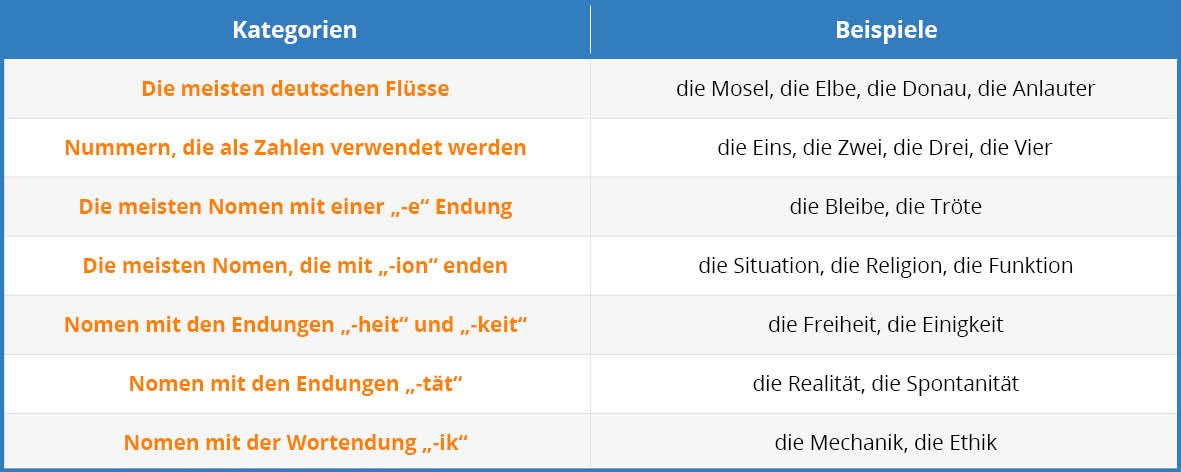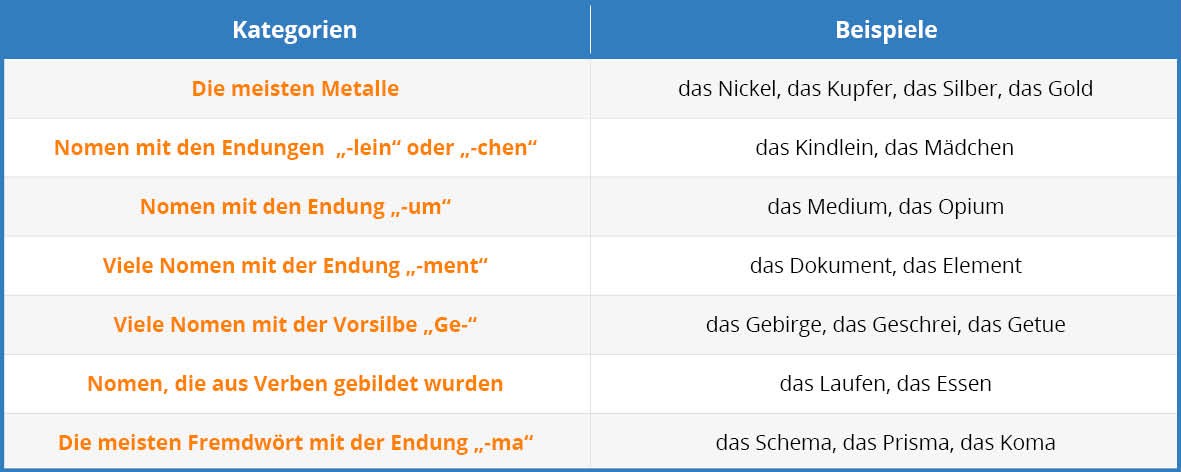German Genders
Erklärungen und Beispiele
German Genders – Summary
Zusammenfassung
The German gender (Genus) determines for each noun the gender category. You can distinguish between three grammatical genders:
- m (masculine = männlich),
- f (feminine = weiblich),
- n (neuter = sächlich)
In German, it is very difficult to determine the gender of a noun by only looking at it (or its ending). So, the best and easiest way to know the gender of a German noun is to learn it by vocabulary list. There are certain guidelines that can help you to determine the gender of a noun, in case you are not sure about it. Just take a look at the following article.
Welcome everybody to language-easy.org! Well, let’s hope you are seated and really motivated – today we will talk about one of the most horrifying topics of German grammar: The German genders. So, in case you don’t understand why people who learn German don’t like this topic. Did you know that horse is neuter, a guitar feminine, and a table masculine?
Although this does not sound too logical, there are some rules that can guide you to determine which noun has which gender. So, in the following, we will try to structure the nouns into different categories which can help you to indicate the German gender. By the way, our article about German articles can also help you to get an overview of nouns and their German gender. Now, let’s not lose too much time and come to the categorization of German nouns and their gender.
The Categorization of German Nouns
Die Kategorisierung von Nomen im Deutschen
Well, as already mentioned above, we will try to categorize German nouns in order to determine to which of the three German genders they belong. Of course, most of you know that there are three German genders: masculine, feminine, and neuter.
- So, the masculine article is “der”, the feminine “die”, and the neuter article “das”.
In the following, we will try to outline the rules for nouns of each gender in the German language. So, try to keep these tables in mind. For sure, other German-speaking people will be impressed by your German gender skills.
“Der” – The Masculine Nouns

“Die” – The Feminine Nouns

“Das” – The Neuter Nouns

The Gender of Compound Nouns
Finally, we come to the last category of nouns and their German gender, the gender of compound nouns.
In case a noun is a combination of various nouns, the last noun in the complex word determines the gender of the whole word.
So, let’s have a look at some examples: “der Tisch” (masculine) + “das Bein” (neuter) = das Tischbein (neuter)
Exercises
Übungen
Finally, we have reached the last part of this article where you can prove the German skills you have just learned. In the following, you will see some phrases that you should complete with the correct terms. Once you have filled all the gaps, just click on the “correct” button and you can see your errors and the correct results. So, I really hope that you have understood the basic principles of German genders – and that you keep the tables from above in mind. By the way, in case you’d like to have some background information about this topic, just take a look at this article on Wikipedia. Auf Wiedersehen!



